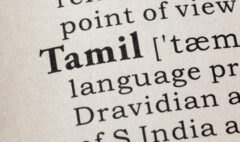How to Write a Business Proposal in Tamil
How to Write a Business Proposal in Tamil
Crafting Success: A Step-by-Step Guide to Writing a Professional Business Proposal in Tamil
In the world of commerce, a well-crafted business proposal is one of the most powerful tools at your disposal. It is more than just a document; it is your ambassador, your argument, and your opportunity to turn a potential client into a valued partner. When conducting business in a Tamil-speaking environment, the ability to present a clear, persuasive, and culturally appropriate proposal in the Tamil language can be a game-changing advantage. It demonstrates a profound level of commitment, a deep respect for your client’s language, and a sophisticated understanding of the local business culture. The art of formal writing in Tamil requires a specific tone, a precise vocabulary, and a clear, logical structure. This guide is designed to be your comprehensive blueprint for creating effective business documents in Tamil. We will walk you through the essential components of a business proposal in Tamil, providing you with the key phrases and structural knowledge needed for clear and persuasive professional communication. This is your key to not just translating your ideas, but presenting them with the power and professionalism they deserve.
The Foundation: The Importance of Formal and Respectful Language
Before you write a single word, you must adopt the appropriate mindset for formal Tamil writing. This register of the language, known as “Sentamil,” is more structured and grammatically precise than the spoken language.
- Always Use Formal Pronouns: Every reference to the client (“you”) must use the respectful “நீங்கள்” (Neengal) and its possessive form “உங்கள்” (Ungal).
- Employ Full Verb Forms: Avoid the clipped, spoken forms of verbs. Use the full, written forms (e.g., “இருக்கிறது” – irukkiradhu instead of “இருக்கு” – irukku; “செய்கிறோம்” – seigirom instead of “செய்றோம்” – seiyrom).
- Maintain a Polite and Respectful Tone: The language should be consistently courteous. Phrases like “தாழ்மையுடன் கேட்டுக்கொள்கிறோம்” (thaazhmaiyudan kettukkolgirom – we humbly request) are common and appropriate.
A proposal written with this level of linguistic respect immediately establishes your professionalism and credibility.
The Anatomy of a Tamil Business Proposal (வியாபாரத் திட்டம் – Viyaabaara-th Thittam)
A standard business proposal follows a logical structure designed to introduce your company, understand the client’s needs, present your solution, and outline the terms of the engagement. Let’s break down each section with the appropriate Tamil headings and phrases.
1. முகப்புரை (Mugappurai) – Introduction / Title Page
This is the first page of your proposal. It should be clean, professional, and contain the essential information.
- Heading: [Client’s Company Name]-க்காக வழங்கப்படும் வியாபாரத் திட்டம் ([Client’s Company Name]-kkaaga vazhangappadum viyaabaara-th thittam) – “A Business Proposal Presented for [Client’s Company Name]”
- Prepared by: தயாரித்தது (Thayaarithadhu): [Your Name/Your Company Name]
- Date: தேதி (Thedhi)
2. பொருளடக்கம் (Poruladakkam) – Table of Contents
For a longer proposal, a table of contents is essential for easy navigation.
3. நிர்வாகச் சுருக்கம் (Nirvaaga-ch Surukkam) – Executive Summary
This is arguably the most important section. It is a concise, high-level overview of the entire proposal. Many executives will only read this section, so it must be compelling and clear.
- Start by stating the purpose: “இந்தத் திட்டத்தின் முக்கிய நோக்கம்…” (Indha-th thittathin mukkiya nokkam…) – “The main objective of this proposal is…”
- Briefly summarize the client’s problem: “உங்கள் நிறுவனம் தற்போது எதிர்கொள்ளும் [Problem] சவாலை நாங்கள் புரிந்துகொள்கிறோம்.” (Ungal niruvanam tharpodhu edhirkollum [Problem] savaalai naangal purindhukolgirom.) – “We understand the challenge of [Problem] that your company is currently facing.”
* Briefly present your solution: “இந்தச் சவாலைச் சமாளிக்க, எங்கள் நிறுவனம் ஒரு தனித்துவமான தீர்வை வழங்குகிறது.” (Indha-ch savaalai-ch samaalikka, engal niruvanam oru thanithuvamaana theervai vazhangugiradhu.) – “To overcome this challenge, our company offers a unique solution.”
* Highlight the key benefits: “இந்தத் தீர்வின் மூலம், உங்கள் நிறுவனத்தின் உற்பத்தித்திறன் அதிகரிக்கும் மற்றும் செலவுகள் குறையும்.” (Indha-th theervin moolam, ungal niruvanathin urpaththithiran adhikarikkum matrum selavugal kuraiyum.) – “Through this solution, your company’s productivity will increase and costs will decrease.”
4. சிக்கல் அறிக்கை (Sikkal Arikkai) – Problem Statement
In this section, you demonstrate your deep understanding of the client’s needs and challenges.
- Heading: நீங்கள் எதிர்கொள்ளும் சவால்கள் (Neengal edhirkollum savaalgal) – “The Challenges You Face”
- Use empathetic language: “தற்போதுள்ள சந்தை நிலவரத்தில், [specific challenge] போன்ற சிக்கல்களைச் சந்திப்பது இயல்பானது என்பதை நாங்கள் அறிவோம்.” (Tharpodhu ulla sandhai nilavarathil, [specific challenge] pondra sikkalgalai-ch sandhippadhu iyalbaanadhu enbadhai naangal arivom.) – “We know that in the current market conditions, it is natural to face issues like [specific challenge].”
5. முன்மொழியப்பட்ட தீர்வு (Munmozhiyappatta Theervu) – Proposed Solution
This is the heart of your proposal. Here, you detail exactly what you are offering.
- Heading: எங்களின் தீர்வு மற்றும் அணுகுமுறை (Engalin theervu matrum anugumurai) – “Our Solution and Approach”
- Be specific and clear: Use bullet points to outline the different components of your solution.
- Key Phrases:
- “நாங்கள் பின்வரும் சேவைகளை வழங்குகிறோம்:” (Naangal pinvarum sevaigalai vazhangugirom:) – “We offer the following services:”
- “எங்கள் திட்டத்தின் முதல் கட்டம்…” (Engal thittathin mudhal kattam…) – “The first phase of our plan is…”
- “இதைச் செயல்படுத்த, நாங்கள் ஒரு பிரத்யேகக் குழுவை நியமிப்போம்.” (Idhai-ch seyalpadutha, naangal oru pirathyega-k kuzhuvai niyamippom.) – “To implement this, we will appoint a dedicated team.”
6. காலவரையறை (Kaalavaraiyarai) – Timeline
Provide a clear and realistic timeline for the project.
- Heading: திட்டத்தின் காலவரையறை (Thittathin kaalavaraiyarai) – “Project Timeline”
* Use a table format:
* Phase: கட்டம் (Kattam)
* Task: பணி (Pani)
* Duration: காலம் (Kaalam)
7. விலை நிர்ணயம் (Vilai Nirnayam) – Pricing / Budget
This section must be transparent and easy to understand.
- Heading: முதலீடு மற்றும் விலை விவரங்கள் (Mudhaleedu matrum vilai vivarangal) – “Investment and Price Details”
- Provide a detailed breakdown: “கட்டண விவரங்கள் பின்வருமாறு:” (Kattana vivarangal pinvarumaaru:) – “The fee details are as follows:”
* Key Vocabulary:
* Total Amount: மொத்தத் தொகை (Moththa-th thogai)
* Tax: வரி (Vari)
* Payment Terms: பணம் செலுத்தும் விதிமுறைகள் (Panam seluthum vidhimuraigal)
8. எங்கள் நிறுவனம் பற்றி (Engal Niruvanam Patri) – About Our Company
Briefly introduce your company and build credibility.
- Our Experience: எங்கள் அனுபவம் (Engal anubavam)
- Our Team: எங்கள் குழு (Engal kuzhu)
- Our Previous Clients: எங்கள் முந்தைய வாடிக்கையாளர்கள் (Engal mundhaiya vaadikkaiyaalargal)
9. முடிவுரை (Mudivurai) – Conclusion
End with a strong, positive, and professional closing statement.
- Reiterate your interest: “உங்களுடன் இணைந்து பணியாற்றுவதை நாங்கள் ஆவலுடன் எதிர்பார்க்கிறோம்.” (Ungaludan inaindhu paniyaatruvaadhai naangal aavaludan edhirpaarkkirom.) – “We eagerly look forward to working with you.”
* Call to Action: “இந்தத் திட்டம் குறித்து மேலும் விவாதிக்க, உகந்த நேரத்தைத் தெரிவிக்குமாறு கேட்டுக்கொள்கிறோம்.” (Indha-th thittam kurithu melum vivaathikka, ugandha nerathai-th therivikkumaaru kettukkolgirom.) – “We request you to let us know a suitable time to discuss this proposal further.”
10. நன்றி (Nandri) – Thank You
A simple “மிக்க நன்றி” (Mikka nandri – Thank you very much) is appropriate.
11. உங்கள் உண்மையுள்ள (Ungal Unmaiyulla) – Yours Sincerely
Followed by your name, title, and company details.
Conclusion: The Blueprint for Persuasion
Writing a business proposal in Tamil is a powerful demonstration of your commitment to the local market and a sign of deep professional respect. The process requires more than just translation; it requires an understanding of the conventions of formal writing in Tamil. By following a clear and logical structure, using a respectful and professional tone, and employing the correct vocabulary, you can create a document that is not only understood but is also persuasive and compelling. This guide provides you with the essential blueprint. Use it to structure your thoughts, to craft your arguments, and to build the bridges of professional communication that will lead to your success in the vibrant Tamil-speaking business world.










